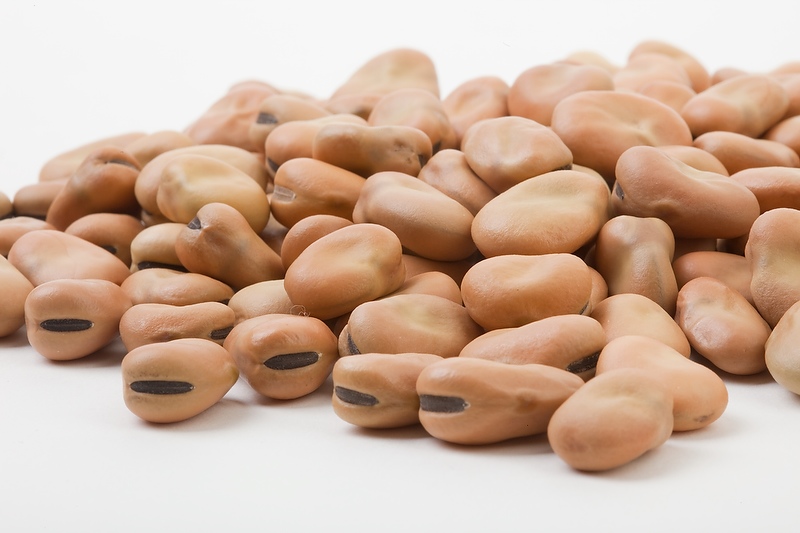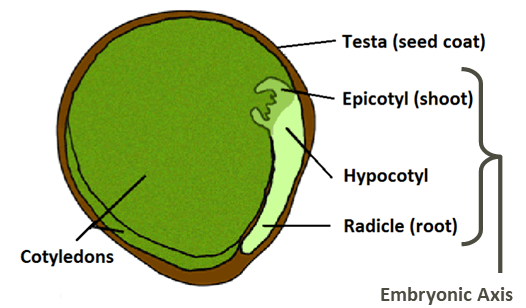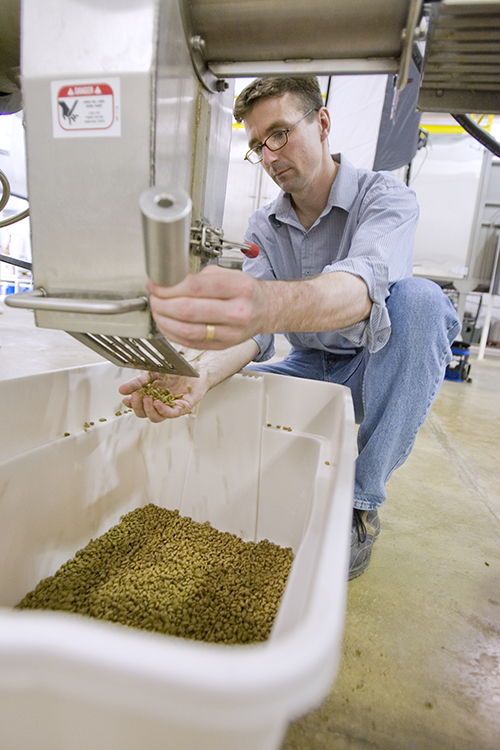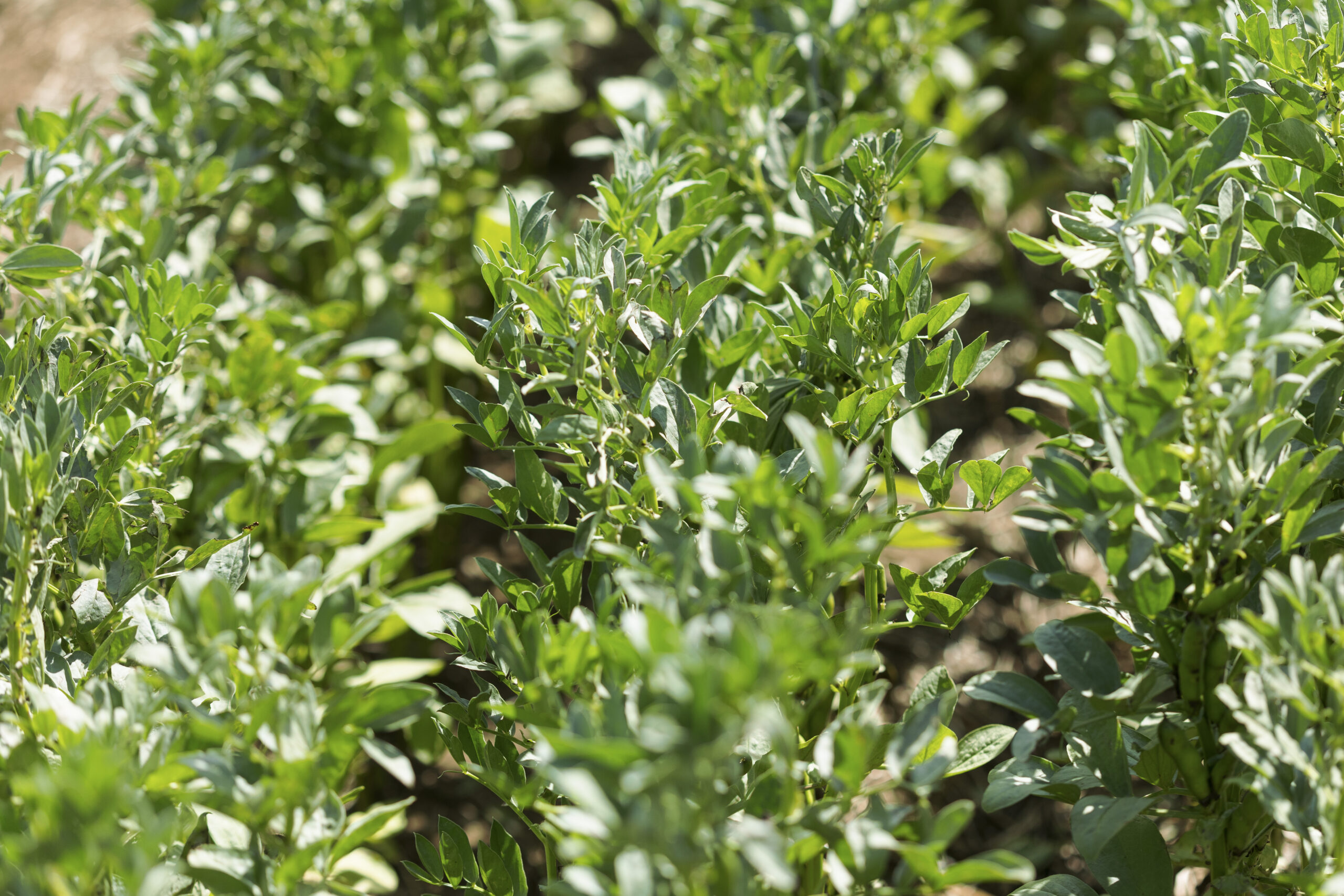Principal Investigator: Dr. Janitha Wanasundara
Institution: Agriculture and Agri-Food Canada, Saskatoon, Sask.
Project Collaborators: Dr. Lamia L’Hocine (AAFC- Saint-Hyacinthe); Dr. Yongfeng Ai (University of Saskatchewan); Dr. Michael Nickerson (University of Saskatchewan); Dr. Phyllis Shand (University of Saskatchewan)
Prepared by: Nate Ort, M.Sc.
This project generated information on nutritional and functional quality parameters of protein and starch in support of positioning faba bean in the legume/pulse-based ingredient landscape. These faba bean varieties provide a seed coat-free flour having 30–34% protein (23% in yellow pea) and 36–38% starch, making it a high-protein flour. Among the components that are considered in evaluating faba bean nutritional value, oligosaccharides, phytates, and tannin levels, and the trypsin inhibiting lipoxygenase and peroxidase activity levels were lower than oil-removed soybean flour but closer to yellow pea flour making them a good candidate in the flour ingredient market.
One aspect of this project evaluated whether these varieties are suitable to go through a sustainable and economical separation process to obtain protein- and starch-concentrated ingredients. Dry fractionation of the three faba bean varieties grown in three different locations in Saskatchewan in two years showed that seed size, growing year, growing location, or the variety grown did not affect the separation efficiency for obtaining seed coat, coarse, and fine fractions of faba bean. This fractionation is based on size and weight of the particles of milled faba bean. For seed-coat free flour the heavy, coarse fraction is rich in starch (66–68%) and low in protein (18–20%) while the light, fine fraction is rich in protein (66–69%) with low starch (~2%). The heavy coarse fraction is the majority of seed-coat free flour. The oligosaccharides (stachyose and verbascose), phytates, and vicine/convicine which are considered to have undesirable nutritional effects tend to concentrate within the protein-rich fraction. Both starch and protein of these fractions have characteristics and properties very close to those naturally found in the seed, and are suitable for using as-is or in further concentrating starch and protein techniques.
Nutritional benefits of raw faba bean starch is conferred by the low levels of readily-digestible and high levels of digestibility-resistant starches. Simple processing, like boiling in water, can change these levels. Faba bean starches create stronger gels than pea or corn starch making them suitable for jelly-like products and glass noodles. Functional and nutritional properties of faba bean starch are less affected by the variety or the growing location and can provide nutritional benefits closer to commercial pea starch than corn starch.
The proteins of faba bean flour are more water soluble (85– 89% of protein) than yellow pea (60%) or soy (77%). When digested in the conditions similar to those in the human digestive tract, proteins of faba bean flour can generate small molecules (peptides) that impart beneficial activities related to antioxidative, antihypertensive, and antidiabetic potency. Allergenic potential of faba bean proteins are similar to the field pea proteins. Proteins of faba bean flour can be recovered in highly concentrated, isolate form through technologies that involve water and pH change. As a protein source that can provide amino acids essential for human adult nutrition, faba bean in the flour form is richer than the isolated protein because some of the water-soluble proteins get lost in the wet isolation steps. Of the accepted quality indices for food protein, values obtained for raw flours were higher than isolated protein.
Faba bean protein-rich fractions have techno-functional properties suitable for applications that require moderate water and oil binding capacity and high oil emulsification ability. Wet processing of protein isolation brings only minor changes to these functions and retains native properties. The proteins of faba bean can incorporate more air, even at low pH, and make more stable foams than yellow pea or soy proteins. Proteins in this fraction produce softer gels than soy and are suitable for products such as vegan yogurt, and heat-set puddings. Seed coat removed faba bean flour tends to contain tannins that may be associated with proteins causing some flavour and taste changes as well as producing greyish color protein-gels compared to the yellowish color produced by pea.
Key Findings
- Faba bean varieties differing in seed size and seed quality characteristics behave similarly when dry fractionated and yield similar fractions of starch or protein while maintaining a consistent concentration, without altering their native properties.
- Faba bean starch produces gels of higher strength than other pulse starches and dry fractionation retains the native properties of starch.
- Faba bean proteins provide essential amino acids and peptides with beneficial biological activities upon digestion.
- Faba bean proteins in concentrated form are suitable for applications requiring soft gel formation while isolated proteins are suitable for stable foams.

Publications
- Chigwedere, C. M., Wanasundara, J. P. D., & Shand, P. J. (2022). Sensory descriptors for pulses and pulse-derived ingredients: Toward a standardized lexicon and sensory wheel. Comprehensive Reviews in Food Science and Food Safety. 21: 999-1023.
- Li, D., Yuan, T. Z., Li, J., Wanasundara, J. P. D., Tulbek, M. C., & Ai, Y. (2022). Understanding structure, functionality, and digestibility of faba bean starch for potential industrial uses. Cereal Chemistry, 99,1318–1330.
- Shi, D., House, J. D., Wanasundara, J. P. D., & Nickerson, M. T. (2022). Comparative evaluation of the nutritional value of faba bean flours and protein isolates with major legumes in the market. Cereal Chemistry, 99, 1013-1029.
- Martineau-Côté, D., Achouri, A., Wanasundara J.P.D., Karboune, S., & L’Hocine, L. (2022). Health beneficial bioactivities of faba bean gastrointestinal (In Vitro) digestate in comparison to soybean and pea. International Journal of Molecular Science. 23(16):9210.
- Martineau-Côté, D., Achouri, A., Karboune, S., L’Hocine, L. (2022) Faba Bean: An untapped source of quality plant proteins and bioactives. Nutrients, 14(8), 1541.



